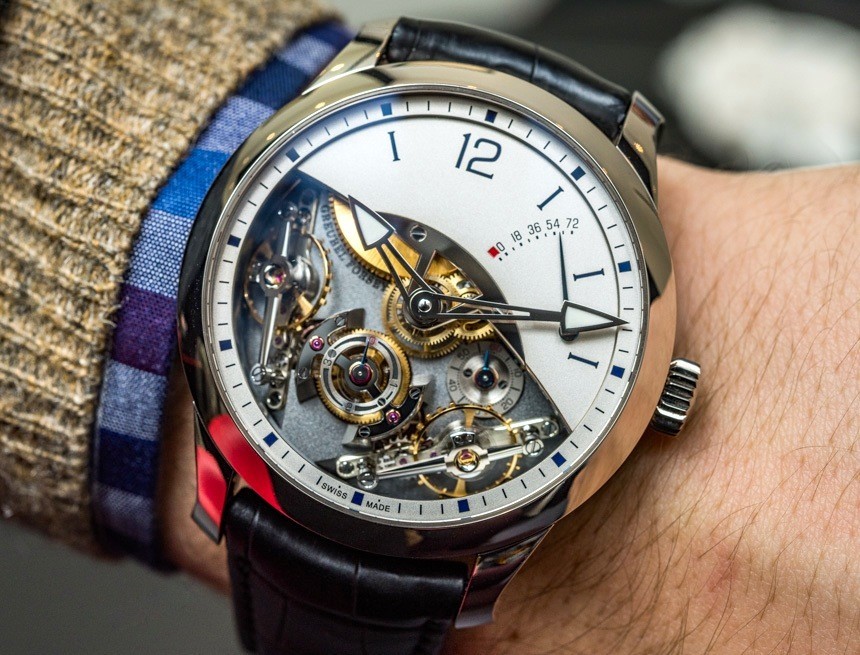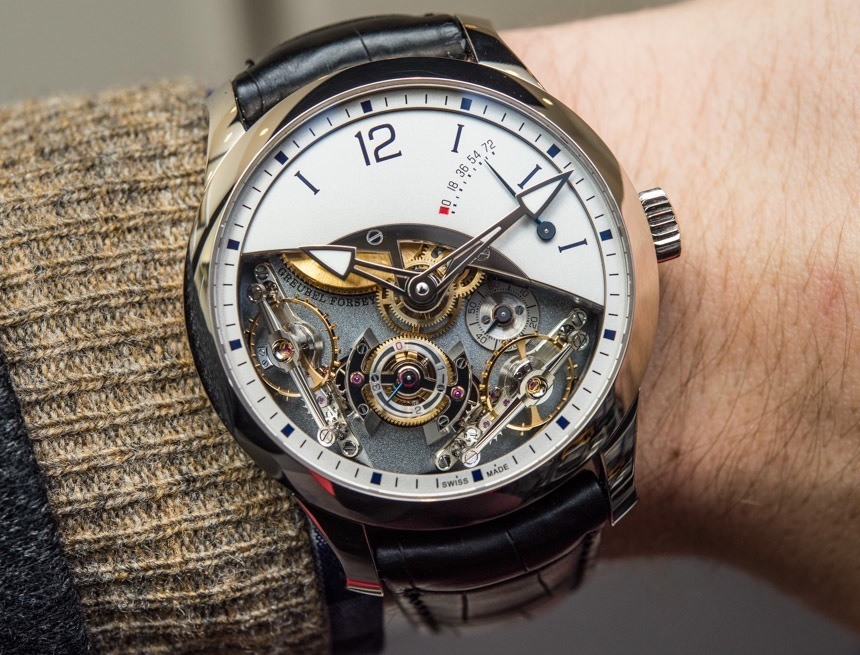
Cliché alert: sometimes you have to break some rules to be able to achieve what you want. The Greubel Forsey Double Balancier à Différentiel Constant does just that, as it sacrifices some basic principles – like good legibility between, well, 4 and 10 o’clock – in favor of highlighting some mind-bogglingly complicated and eye-wateringly beautiful mechanical feats. Here’s the how and the why.
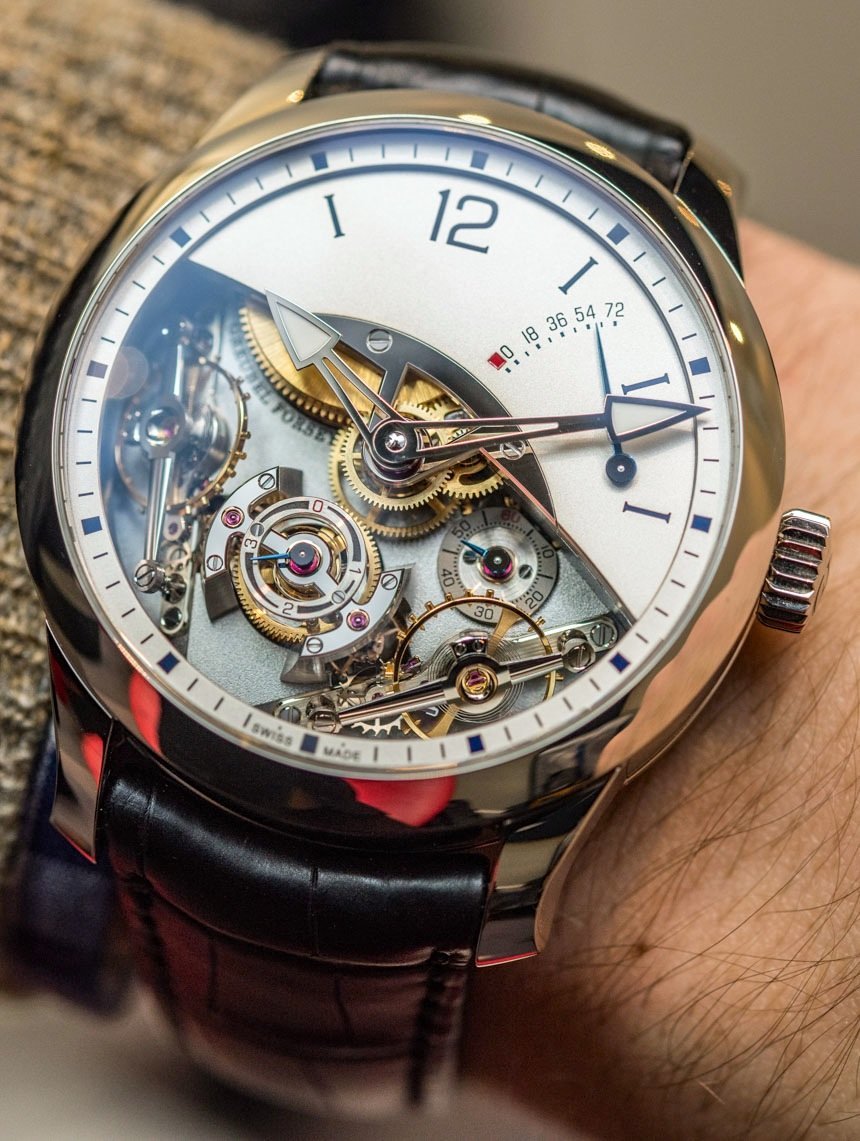
Established in 2004, Greubel Forsey has made a name for itself by creating some of the most outrageously complex tourbillon watches the watch world has ever seen – just think of the Quadruple Tourbillon (hands-on here), or the $2-million Art Piece 1 watch (hands-on). The 12-or-so years (and counting) of highly successful collaboration between Robert Greubel and Stephen Forsey has proven to be long enough to allow for some non-tourbillon creations to make their way into the brand’s assortment in an effort to push prices down to a much more affordable level. While that still means we are running deep into six-figure territory, this actually positions GF in a way that it allows them to realistically compete with high-complication pieces from major brands such as Jaeger-LeCoultre, Audemars Piguet, and a long list of others.
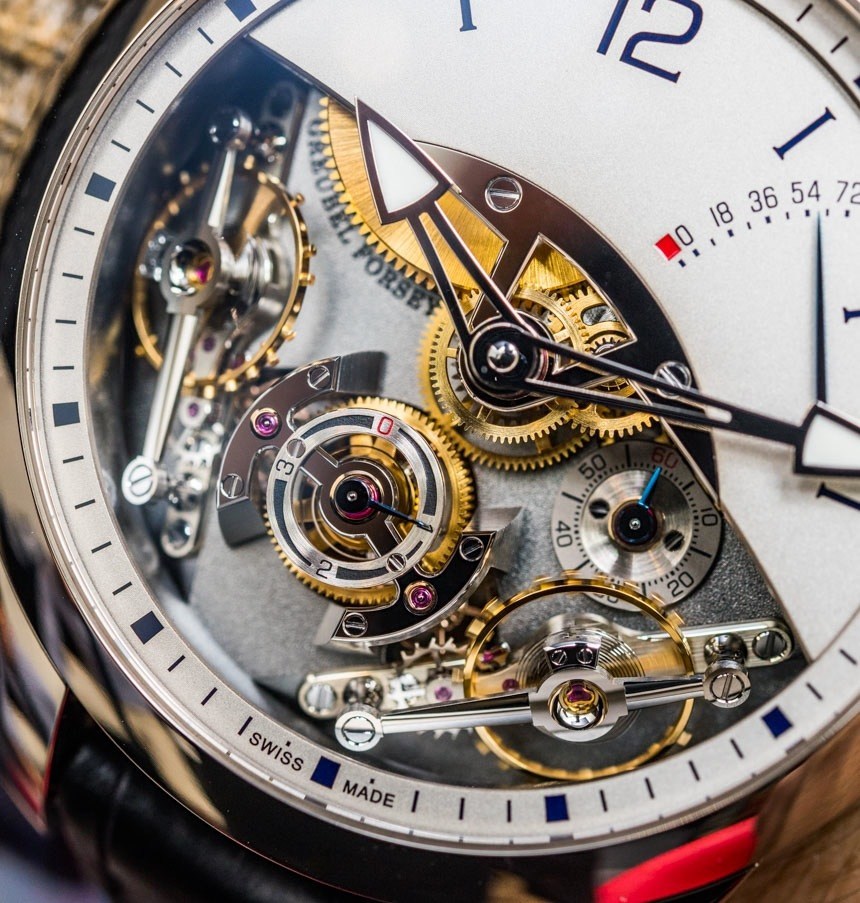
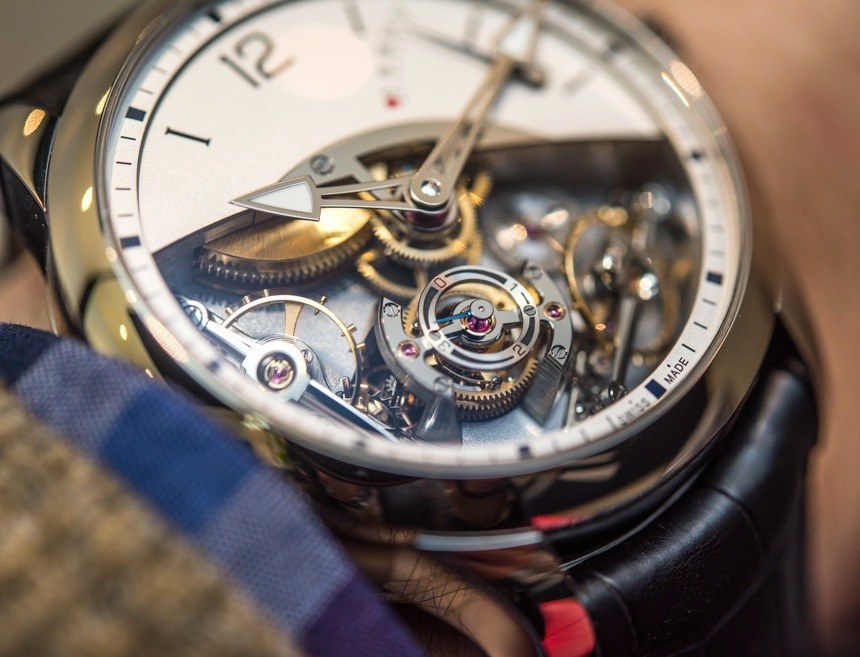
In typical Greubel Forsey fashion, that means not the inclusion of traditional complications such as perpetual calendars (although they have done one of those, and it’s quite incredible), chronographs, or repeaters, but the use of twisted, enhanced, and complex alterations of timekeeping mechanisms. The Greubel Forsey Double Balancier à Différentiel Constant, as its fancy-looking and -sounding name implies, attacks with not one but two balance wheels, coupled by a spherical and constant force differential.
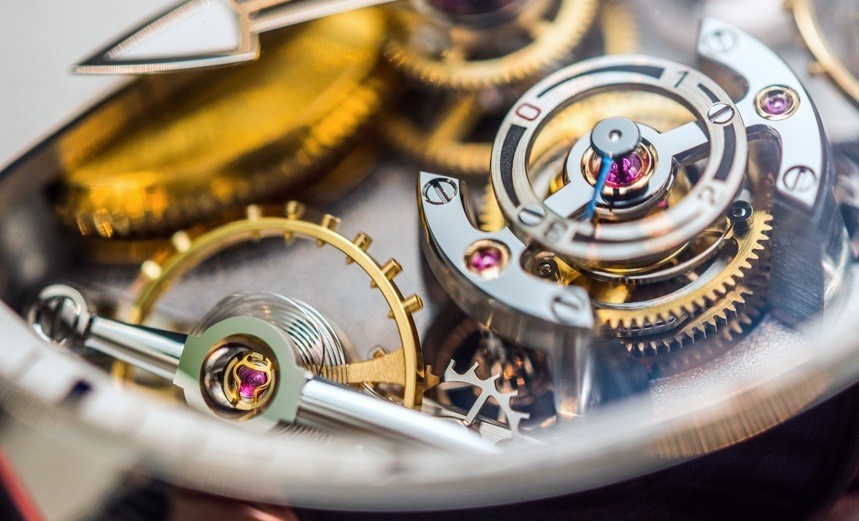
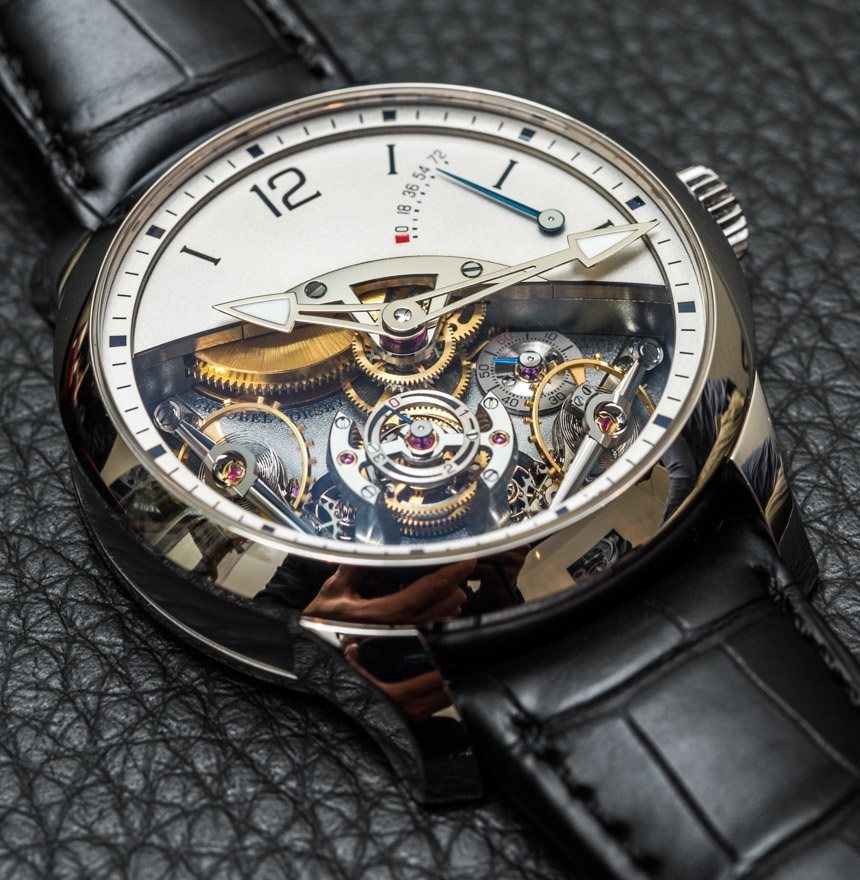
Let’s unfold the mysteries by first looking at that duo of frantically ticking balance wheels. As they say, “if one is good, then two is better,” but that clearly is just the tip of a technological iceberg. The two balance wheels are set on two separate escapement platforms, each of which comprises 71 components. These platforms have been inclined and installed in a way that they are each at a 30° angle with the plane of the movement plate.
The reason for this is as follows: the performance (rate and amplitude) of the balance wheel and spring are strongly affected by the position they are in. When a watchmaker adjusts a movement, he/she will have to find the right balance between the greatly different performances of the movement in different positions. When the watch is laid flat on a table – and hence the wheel and spring are also horizontal – the rate will be considerably different to when you put the watch crown facing down so they are in an almost vertical position.
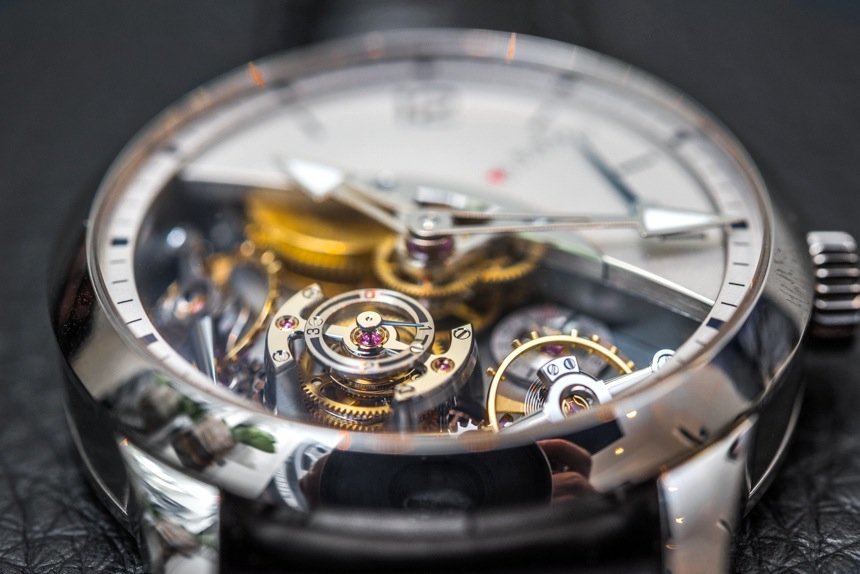
By installing the balance wheels and their platforms at an angle to the main plate and also to one another, each will spend a very limited time in the horizontal and vertical positions (not even when the watch is put down on a table or set vertically in a safe), where the differences and errors are the greatest. An inclined 30° angle sort of works as a constant averaging factor, and because the two balance wheels are set at different angles, at least one of them will always perform more closely to ideal.
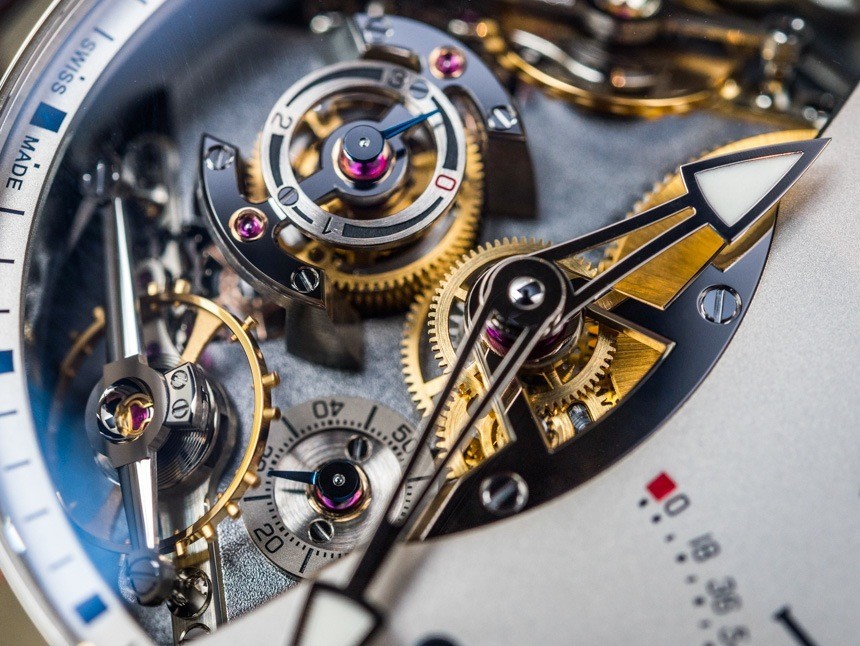

The question now is how do you turn those rate differences between the two balance wheels into mechanical timekeeping – how do you have the two timekeeping organs drive just one set of hands? The answer is a differential, a very similar system to what you would find in cars. Frankly, as I clearly do not possess as deep an understanding of this mechanism as its creators, please bear with me as I, nevertheless, try and give you a run-down on how it works and why it’s in there in the first place. But first, check out this sweet old video that beautifully illustrates how a differential works – dedicate 5 minutes to it, and be amazed.
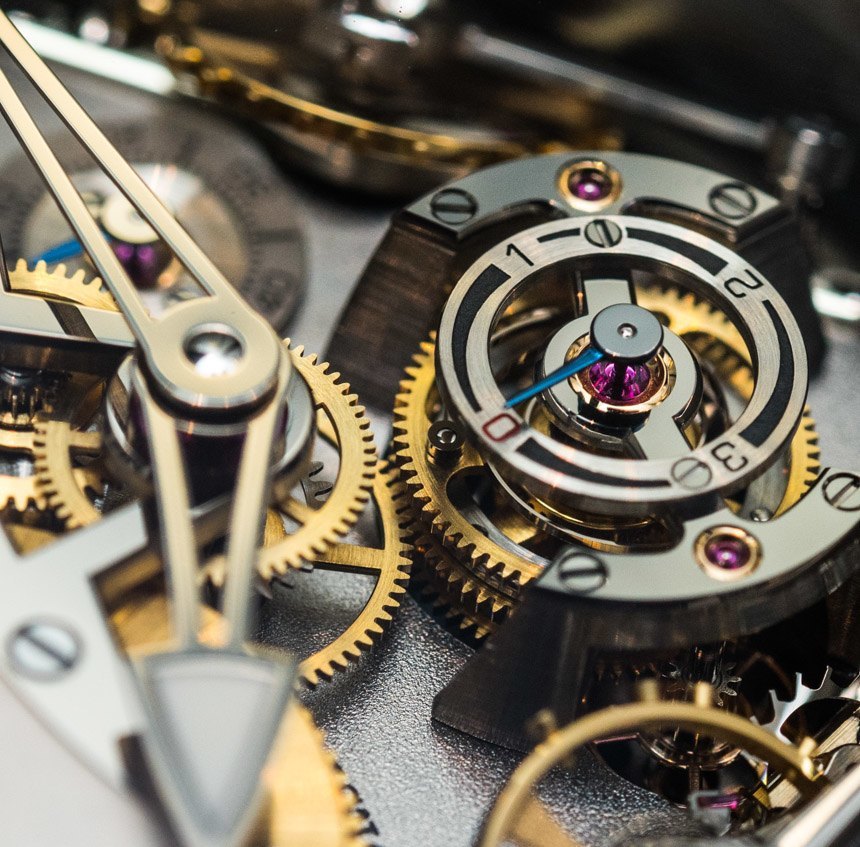
If you take a look at the close-up image just above, you’ll see that, in essence, the differential is composed of three wheels stacked on top of one another. The ones on top and bottom are connected to each of the two escapements respectively, while the middle one is connected to the going train or, basically, the rest of the movement. Now, as the balance wheels tick away at their own rate – ideally 3 Hertz or 21,600 vibrations per hour, with both of them running not exactly at that frequency thanks to deviations caused by positional errors – the differential, using the principle explained in the video above, averages out the two.
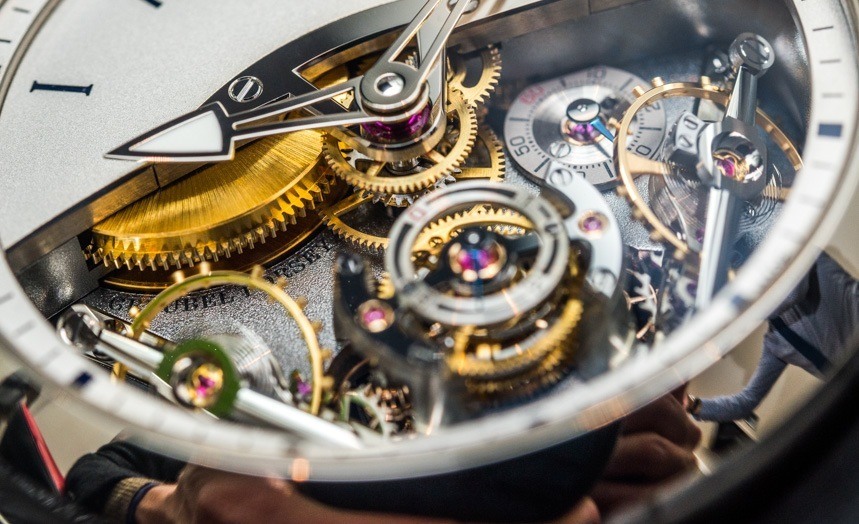
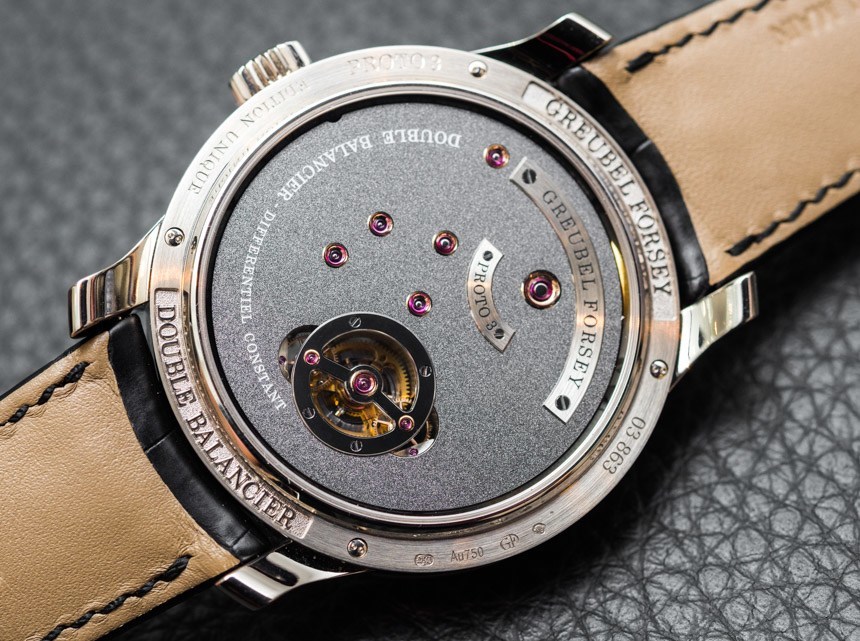
So, to give you an example, if one of the escapements runs at -2 seconds per day and the other runs at +2, the average that the differential delivers to the hands actually is 0 – or perfect timekeeping. So what’s that 0-1-2-3 sub-dial have to do with any of this? That is a four-minute counter that is linked to another part of the differential…
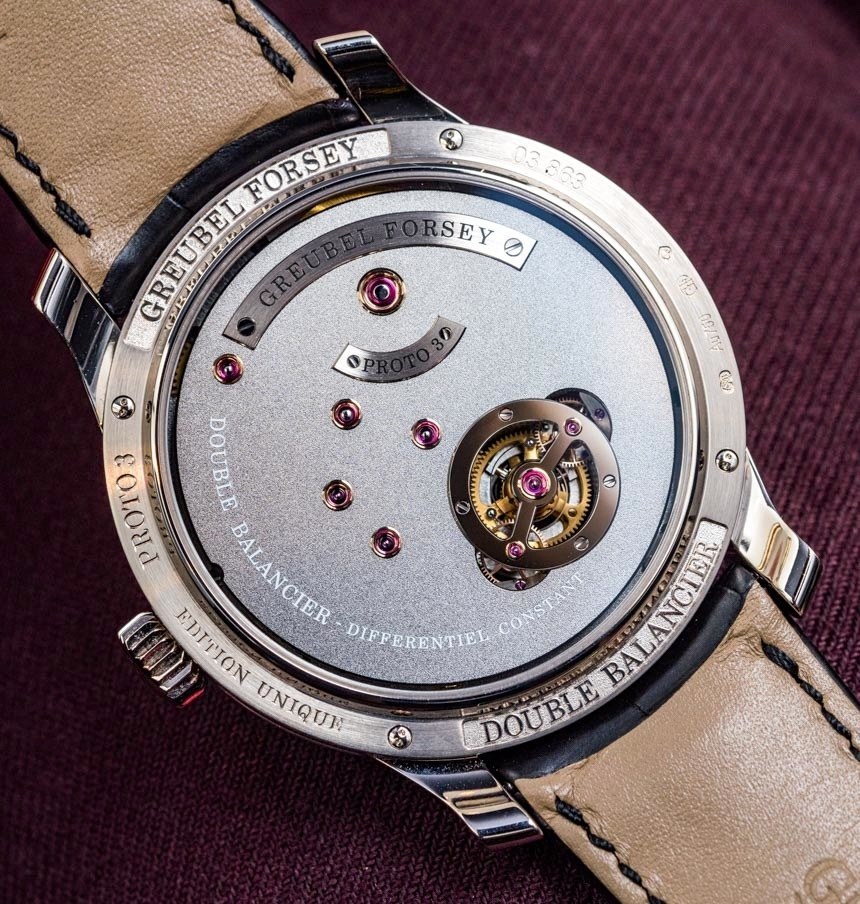
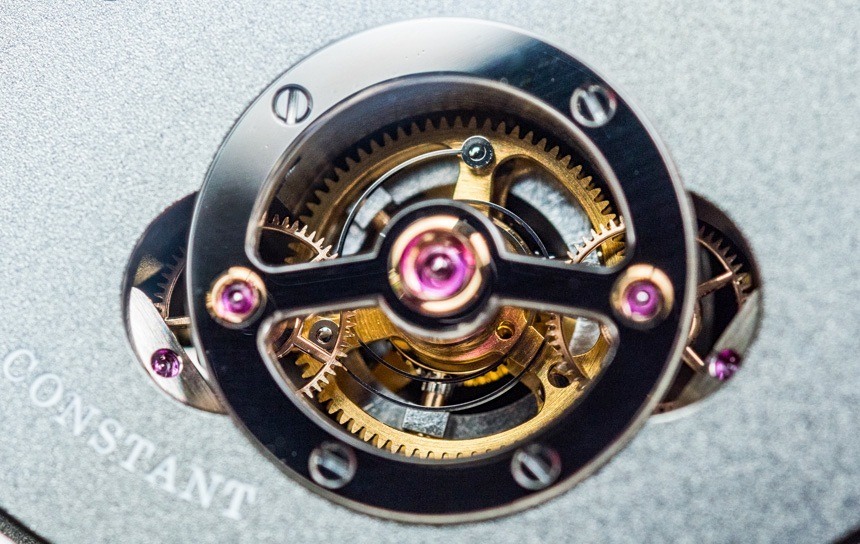
You see, as though all that dizzying engineering weren’t enough, Greubel Forsey has added a constant force mechanism to the differential. Exposed through a little aperture set into the caseback side of the movement, a wheel and a spring on the underside of the differential can be spotted. This spring, that may look a bit like a hairspring to the untrained eye, is responsible for releasing its energy into the differential, all the way through to the double escapements. This is done so as to counter the effects of waning torque delivered by the two, series-coupled mainspring barrels of the movement as they near the end of their 72-hour-long power reserve. The four-minute counter that we mentioned just above is linked to this bottom gear of the constant force mechanism as it takes it four full minutes to make a complete rotation.

